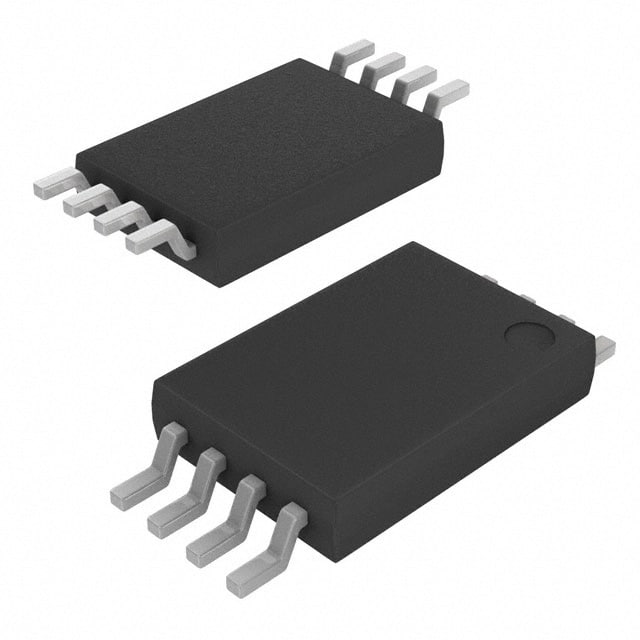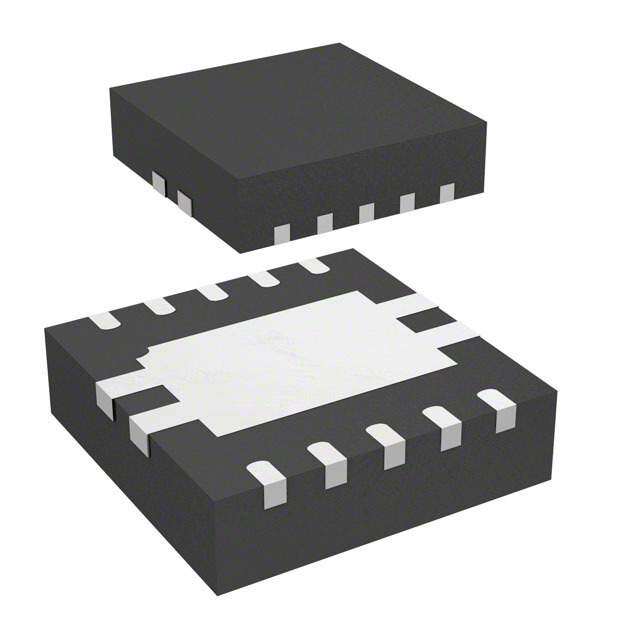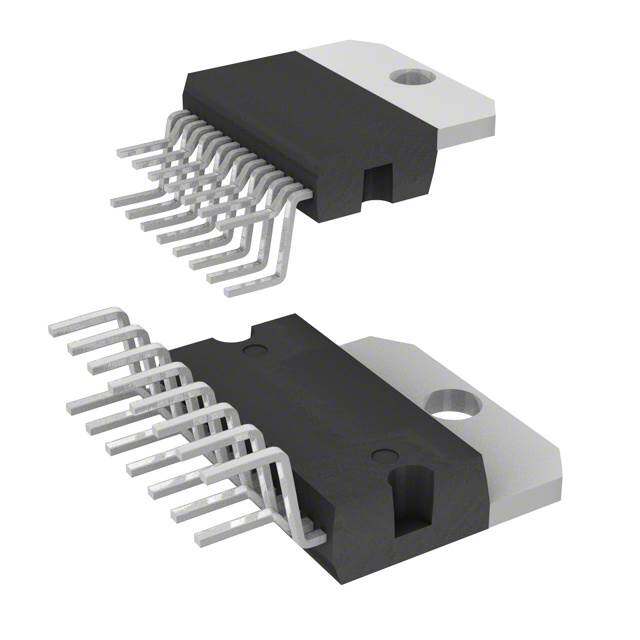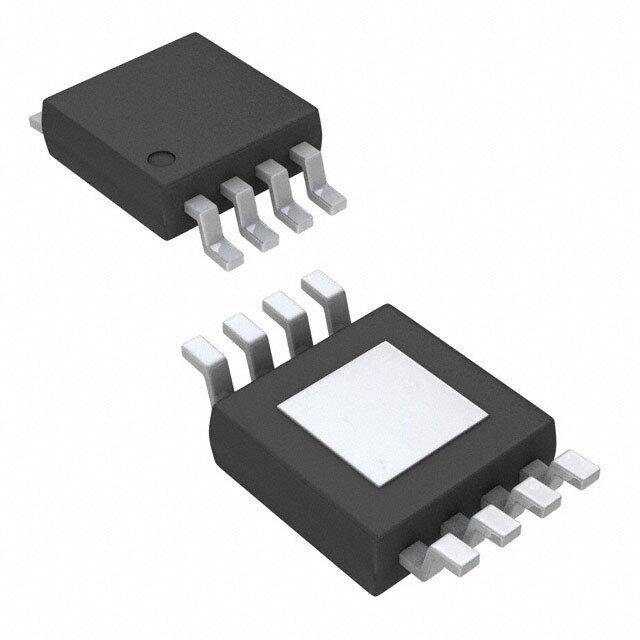ICGOO在线商城 > 集成电路(IC) > PMIC - 稳压器 - DC DC 开关稳压器 > TPS61085PW
- 型号: TPS61085PW
- 制造商: Texas Instruments
- 库位|库存: xxxx|xxxx
- 要求:
| 数量阶梯 | 香港交货 | 国内含税 |
| +xxxx | $xxxx | ¥xxxx |
查看当月历史价格
查看今年历史价格
TPS61085PW产品简介:
ICGOO电子元器件商城为您提供TPS61085PW由Texas Instruments设计生产,在icgoo商城现货销售,并且可以通过原厂、代理商等渠道进行代购。 TPS61085PW价格参考。Texas InstrumentsTPS61085PW封装/规格:PMIC - 稳压器 - DC DC 开关稳压器, 可调式 升压 开关稳压器 IC 正 2.8V 1 输出 2A(开关) 8-TSSOP(0.173",4.40mm 宽)。您可以下载TPS61085PW参考资料、Datasheet数据手册功能说明书,资料中有TPS61085PW 详细功能的应用电路图电压和使用方法及教程。
| 参数 | 数值 |
| 产品目录 | 集成电路 (IC)半导体 |
| 描述 | IC REG BOOST ADJ 2A 8TSSOP稳压器—开关式稳压器 650kHz 1.2MHz Step- Up DC-DC Converter |
| DevelopmentKit | TPS61085EVM-355 |
| 产品分类 | |
| 品牌 | Texas Instruments |
| 产品手册 | http://www.ti.com/litv/slvs859a |
| 产品图片 |
|
| rohs | 符合RoHS无铅 / 符合限制有害物质指令(RoHS)规范要求 |
| 产品系列 | 电源管理 IC,稳压器—开关式稳压器,Texas Instruments TPS61085PW- |
| 数据手册 | |
| 产品型号 | TPS61085PW |
| PWM类型 | 电流模式 |
| 产品目录页面 | |
| 产品种类 | 稳压器—开关式稳压器 |
| 供应商器件封装 | 8-TSSOP |
| 其它名称 | 296-27011 |
| 包装 | 管件 |
| 单位重量 | 39 mg |
| 同步整流器 | 无 |
| 商标 | Texas Instruments |
| 安装类型 | 表面贴装 |
| 安装风格 | SMD/SMT |
| 宽度 | 4.4 mm |
| 封装 | Tube |
| 封装/外壳 | 8-TSSOP(0.173",4.40mm 宽) |
| 封装/箱体 | TSSOP-8 |
| 工作温度 | -40°C ~ 85°C |
| 工作温度范围 | - 40 C to + 85 C |
| 工厂包装数量 | 150 |
| 开关频率 | 650 kHz, 1.2 MHz |
| 拓扑结构 | Boost |
| 最大工作温度 | + 85 C |
| 最大输入电压 | 6 V |
| 最小工作温度 | - 40 C |
| 最小输入电压 | 2.3 V |
| 标准包装 | 150 |
| 电压-输入 | 2.3 V ~ 6 V |
| 电压-输出 | 2.8 V ~ 18.5 V |
| 电流-输出 | 2A |
| 类型 | Voltage Converter |
| 系列 | TPS61085 |
| 设计资源 | http://www.digikey.com/product-highlights/cn/zh/texas-instruments-webench-design-center/3176 |
| 负载调节 | 0.11 % / A |
| 输出数 | 1 |
| 输出电压 | 18.5 V |
| 输出电流 | 2 A |
| 输出端数量 | 1 Output |
| 输出类型 | 可调式 |
| 配用 | /product-detail/zh/TPS61085EVM-355/296-31222-ND/2047994 |
| 频率-开关 | 650kHz,1.2MHz |



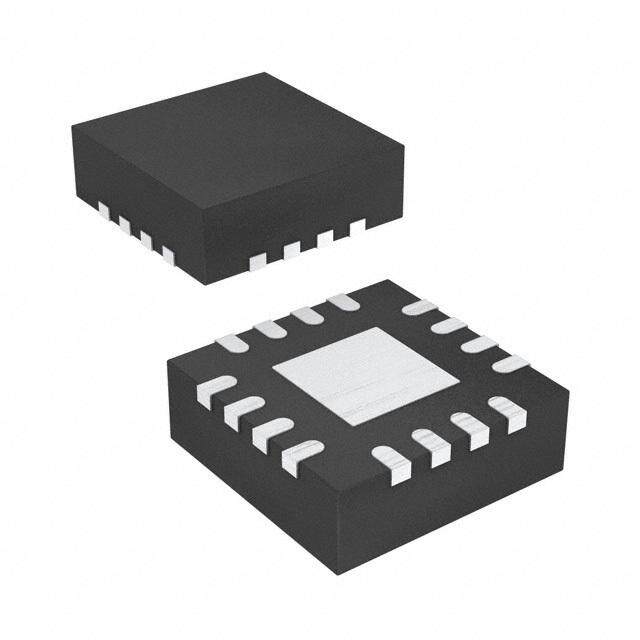




- 商务部:美国ITC正式对集成电路等产品启动337调查
- 曝三星4nm工艺存在良率问题 高通将骁龙8 Gen1或转产台积电
- 太阳诱电将投资9.5亿元在常州建新厂生产MLCC 预计2023年完工
- 英特尔发布欧洲新工厂建设计划 深化IDM 2.0 战略
- 台积电先进制程称霸业界 有大客户加持明年业绩稳了
- 达到5530亿美元!SIA预计今年全球半导体销售额将创下新高
- 英特尔拟将自动驾驶子公司Mobileye上市 估值或超500亿美元
- 三星加码芯片和SET,合并消费电子和移动部门,撤换高东真等 CEO
- 三星电子宣布重大人事变动 还合并消费电子和移动部门
- 海关总署:前11个月进口集成电路产品价值2.52万亿元 增长14.8%
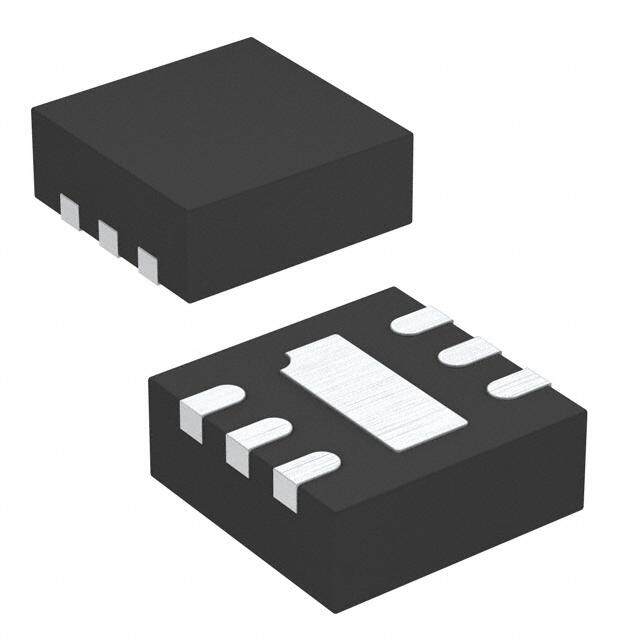
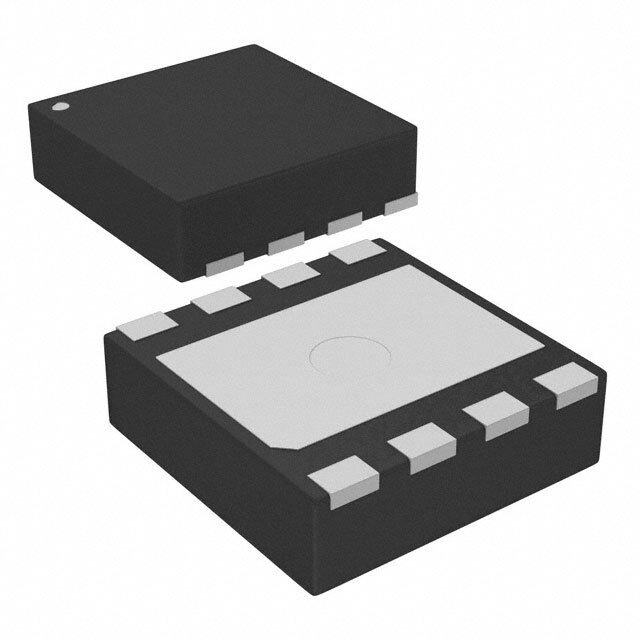

PDF Datasheet 数据手册内容提取
Product Sample & Technical Tools & Support & Folder Buy Documents Software Community TPS61085 SLVS859B–JUNE2008–REVISEDDECEMBER2014 TPS61085 650-kHz,1.2-MHz, 18.5-V Step-Up DC-DC Converter 1 Features 3 Description • 2.3Vto6VInputVoltageRange The TPS61085 is a high frequency, high efficiency 1 DC-DC converter with an integrated 2.0-A, 0.13-Ω • 18.5-VBoostConverterWith2.0-ASwitchCurrent power switch capable of providing an output voltage • 650-kHz/1.2-MHzSelectableSwitchingFrequency up to 18.5 V. The selectable frequency of 650 kHz or • AdjustableSoft-Start 1.2 MHz allows the use of small external inductors and capacitors and provides fast transient response. • ThermalShutdown The external compensation allows optimizing the • UndervoltageLockout application for specific conditions. A capacitor • 8-PinVSSOPPackage connected to the soft-start pin minimizes inrush currentatstartup. • 8-PinTSSOPPackage DeviceInformation(1) 2 Applications PARTNUMBER PACKAGE BODYSIZE(NOM) • HandheldDevices VSSOP(8) 3.00mm×3.00mm • GPSReceivers TPS61085 TSSOP(8) 3.00mm×4.40mm • DigitalStillCameras (1) For all available packages, see the orderable addendum at • PortableApplications theendofthedatasheet. • DSLModems • PCMCIACards • TFTLCDBiasSupply 4 Simplified Schematic L 3.3mH VIN PMEG2D010AEH VS 2.3 V to 6 V 6 5 12 V/300 mA IN SW C BY R1 1µF 158 kΩ CIN 16 V 3 EN FB 2 COUT 10µF 16 V R2 2* 10 µF 25 V 18.2 kΩ 7 1 FREQ COMP R COMP 4 8 51 kΩ GND SS C COMP TPS61085 C 1.1 nF SS 100 nF 1 An IMPORTANT NOTICE at the end of this data sheet addresses availability, warranty, changes, use in safety-critical applications, intellectualpropertymattersandotherimportantdisclaimers.PRODUCTIONDATA.
TPS61085 SLVS859B–JUNE2008–REVISEDDECEMBER2014 www.ti.com Table of Contents 1 Features.................................................................. 1 8.3 FeatureDescription...................................................8 2 Applications........................................................... 1 8.4 DeviceFunctionalModes..........................................8 3 Description............................................................. 1 9 ApplicationandImplementation.......................... 9 4 SimplifiedSchematic............................................. 1 9.1 ApplicationInformation..............................................9 9.2 TypicalApplication....................................................9 5 RevisionHistory..................................................... 2 9.3 SystemExamples...................................................15 6 PinConfigurationandFunctions......................... 3 10 PowerSupplyRecommendations..................... 18 7 Specifications......................................................... 3 11 Layout................................................................... 19 7.1 AbsoluteMaximumRatings......................................3 11.1 LayoutGuidelines.................................................19 7.2 ESDRatings..............................................................3 11.2 LayoutExample....................................................19 7.3 RecommendedOperatingConditions.......................4 12 DeviceandDocumentationSupport................. 20 7.4 ThermalInformation..................................................4 7.5 ElectricalCharacteristics...........................................4 12.1 Trademarks...........................................................20 7.6 TypicalCharacteristics..............................................5 12.2 ElectrostaticDischargeCaution............................20 12.3 Glossary................................................................20 8 DetailedDescription.............................................. 7 13 Mechanical,Packaging,andOrderable 8.1 Overview...................................................................7 Information........................................................... 20 8.2 FunctionalBlockDiagram.........................................7 5 Revision History ChangesfromRevisionA(April2012)toRevisionB Page • AddedESDRatingstable,FeatureDescriptionsection,DeviceFunctionalModes,ApplicationandImplementation section,PowerSupplyRecommendationssection,Layoutsection,DeviceandDocumentationSupportsection,and Mechanical,Packaging,andOrderableInformationsection.................................................................................................. 1 ChangesfromOriginal(June2008)toRevisionA Page • ChangedthecircuitillustrationvalueofC From:1.6nFTo:1.1nF............................................................................... 1 COMP • DeletedLeadTemperaturefromtheAbsMaxtable.............................................................................................................. 3 • Addedaconditionsstatementandtwonewgraphs(MaxLoadCurrentvsInputVoltage)totheTypical Characteristicsgraphs............................................................................................................................................................ 5 • AddedthreeparagraphsoftexttotheDetailedDescription.................................................................................................. 7 • ChangedFigure8toFigure17.............................................................................................................................................. 9 • ChangedtheDesignProcuduresstep3detailsfollowingEquation4 ................................................................................ 10 • ChangedtextintheInductorSelectionsection"inductorcurrentrippleisbelow20%"to"inductorcurrentrippleis below35%" .......................................................................................................................................................................... 10 • ChangedEquation8............................................................................................................................................................. 12 • AddedUsedI toTable5.................................................................................................................................................. 12 OUT • AddedEquation10............................................................................................................................................................... 13 • ChangedtheWhiteLEDApplicationsoptionalZenerconnectionforFigure19toFigure21.............................................. 17 2 SubmitDocumentationFeedback Copyright©2008–2014,TexasInstrumentsIncorporated ProductFolderLinks:TPS61085
TPS61085 www.ti.com SLVS859B–JUNE2008–REVISEDDECEMBER2014 6 Pin Configuration and Functions DGK,PWPackages 8Pins TopView COMP 1 8 SS FB 2 7 FREQ EN 3 6 IN PGND 4 5 SW 8-PIN4.9-mm×3-mm×1.1-mmVSSOP(DGK) 8-PIN6.4-mm×3-mm×1.2-mmTSSOP(PW) PinFunctions PIN I/O DESCRIPTION NAME NO. COMP 1 I/O Compensationpin EN 3 I Shutdowncontrolinput.Connectthispintologichighleveltoenablethedevice FB 2 I Feedbackpin FREQ 7 I Frequencyselectpin.Thepowerswitchoperatesat650kHzifFREQisconnectedtoGNDandat1.2MHzif FREQisconnectedtoIN IN 6 I Inputsupplypin PGND 4 Powerground SS 8 O Soft-startcontrolpin.Connectacapacitortothispinifsoft-startneeded.Open=nosoft-start SW 5 I Switchpin 7 Specifications 7.1 Absolute Maximum Ratings overoperatingfree-airtemperaturerange(unlessotherwisenoted)(1)(2) MIN MAX UNIT InputvoltagerangeIN –0.3 7 V VoltagerangeonpinsEN,FB,SS,FREQ,COMP –0.3 7 V VoltageonpinSW -0.3 20 V Continuouspowerdissipation SeeThermalInformation Operatingjunctiontemperature –40 150 °C Storagetemperature –65 150 °C (1) Stressesbeyondthoselistedunderabsolutemaximumratingsmaycausepermanentdamagetothedevice.Thesearestressratings only,andfunctionaloperationofthedeviceattheseoranyotherconditionsbeyondthoseindicatedunderrecommendedoperating conditionsisnotimplied.Exposuretoabsolute-maximum-ratedconditionsforextendedperiodsmayaffectdevicereliability (2) Allvoltagevaluesarewithrespecttonetworkgroundterminal. 7.2 ESD Ratings VALUE UNIT Humanbodymodel(HBM),perANSI/ESDA/JEDECJS-001(1) ±2000 Charged-devicemodel(CDM),perJEDECspecificationJESD22- ±500 V(ESD) Electrostaticdischarge C101(2) V Machinemodel(MM) ±200 (1) JEDECdocumentJEP155statesthat500-VHBMallowssafemanufacturingwithastandardESDcontrolprocess.Manufacturingwith lessthan500-VHBMispossiblewiththenecessaryprecautions.Pinslistedas±XXXVmayactuallyhavehigherperformance. (2) JEDECdocumentJEP157statesthat250-VCDMallowssafemanufacturingwithastandardESDcontrolprocess.Manufacturingwith lessthan250-VCDMispossiblewiththenecessaryprecautions.Pinslistedas±YYYVmayactuallyhavehigherperformance. Copyright©2008–2014,TexasInstrumentsIncorporated SubmitDocumentationFeedback 3 ProductFolderLinks:TPS61085
TPS61085 SLVS859B–JUNE2008–REVISEDDECEMBER2014 www.ti.com 7.3 Recommended Operating Conditions MIN TYP MAX UNIT V Inputvoltagerange 2.3 6 V IN V Boostoutputvoltagerange V +0.5 18.5 V S IN T Operatingfree-airtemperature –40 85 °C A T Operatingjunctiontemperature –40 125 °C J 7.4 Thermal Information TPS61085 THERMALMETRIC(1) DGK PW UNIT 8PINS 8PINS R Junction-to-ambientthermalresistance 189.3 183.3 θJA R Junction-to-case(top)thermalresistance 57.1 66.7 θJC(top) R Junction-to-boardthermalresistance 109.9 112.0 °C/W θJB ψ Junction-to-topcharacterizationparameter 3.5 8.3 JT ψ Junction-to-boardcharacterizationparameter 108.3 110.3 JB (1) Formoreinformationabouttraditionalandnewthermalmetrics,seetheICPackageThermalMetricsapplicationreport,SPRA953. 7.5 Electrical Characteristics V =3.3V,EN=V ,V =12V,T =–40°Cto85°C,typicalvaluesareatT =25°C(unlessotherwisenoted) IN IN S A A PARAMETER TESTCONDITIONS MIN TYP MAX UNIT SUPPLY V Inputvoltagerange 2.3 6 V IN I OperatingquiescentcurrentintoIN Devicenotswitching,V =1.3V 70 100 μA Q FB I ShutdowncurrentintoIN EN=GND 1 μA SDVIN UVLO Undervoltagelockoutthreshold V falling 2.2 V IN V rising 2.3 V IN T Thermalshutdown Temperaturerising 150 °C SD T Thermalshutdownhysteresis 14 °C SD(HYS) LOGICSIGNALSEN,FREQ V Highlevelinputvoltage V =2.3Vto6V 2 V IH IN V Lowlevelinputvoltage V =2.3Vto6V 0.5 V IL IN I Inputleakagecurrent EN=FREQ=GND 0.1 μA lkg BOOSTCONVERTER V Boostoutputvoltage V + 18.5 V S IN 0.5 V Feedbackregulationvoltage 1.230 1.238 1.246 V FB gm Transconductanceerroramplifier 107 μA/V I Feedbackinputbiascurrent V =1.238V 0.1 μA FB FB r N-channelMOSFETon-resistance V =V =5V,I =currentlimit 0.13 0.20 Ω DS(on) IN GS SW V =V =3.3V,I =currentlimit 0.15 0.24 IN GS SW I SWleakagecurrent EN=GND,V =6VTBD 10 µA lkg SW I N-ChannelMOSFETcurrentlimit 2.0 2.6 3.2 A LIM I Soft-startcurrent V =1.238V 7 10 13 μA SS SS f Oscillatorfrequency FREQ=V 0.9 1.2 1.5 MHz S IN FREQ=GND 480 650 820 kHz Lineregulation V =2.3Vto6V,I =10mA 0.0002 %/V IN OUT Loadregulation V =3.3V,I =1mAto400mA 0.11 %/A IN OUT 4 SubmitDocumentationFeedback Copyright©2008–2014,TexasInstrumentsIncorporated ProductFolderLinks:TPS61085
TPS61085 www.ti.com SLVS859B–JUNE2008–REVISEDDECEMBER2014 7.6 Typical Characteristics Thetypicalcharacteristicsaremeasuredwiththeinductors74477890033.3µH(highfrequency)orB82464G46.8µH(low frequency)fromEpcosandtherectifierdiodeSL22. Table1.TableOfGraphs FIGURE vsInputvoltageathighfrequency(1.2MHz) Figure1 I Maximumloadcurrent OUT(max) vsInputvoltageatlowfrequency(650kHz) Figure2 vsLoadcurrent,V =12V,V =3.3V Figure3 S IN η Efficiency vsLoadcurrent,V =9V,V =3.3V Figure4 S IN Supplycurrent vsSupplyvoltage Figure5 Frequency vsLoadcurrent Figure6 Frequency vsSupplyvoltage Figure7 1.6 1.6 fS = 1.2 MHz fS = 1.2 MHz 1.4 VOUT = 9 V 1.4 VOUT = 9 V 1.2 1.2 A) A) nt ( 1 VOUT = 12 V nt ( 1 VOUT = 12 V e e urr urr C C ut 0.8 ut 0.8 p p ut ut O O − 0.6 − 0.6 UT UT O O I I 0.4 0.4 VOUT = 15 V 0.2 VOUT = 15 V 0.2 VOUT = 18.5 V VOUT = 18.5 V 0 0 2.5 3.0 3.5 4.0 4.5 5.0 5.5 6.0 2.5 3.0 3.5 4.0 4.5 5.0 5.5 6.0 VIN − Input Voltage (V) VIN − Input Voltage (V) G000 G000 Figure1.MaximumLoadCurrentvsInputVoltage Figure2.MaximumLoadCurrentvsInputVoltage Copyright©2008–2014,TexasInstrumentsIncorporated SubmitDocumentationFeedback 5 ProductFolderLinks:TPS61085
TPS61085 SLVS859B–JUNE2008–REVISEDDECEMBER2014 www.ti.com 100 100 f = 650 kHz f = 650 kHz S S 90 L= 6.8 µH 90 L= 6.8 µH 80 f = 1.2 MHz 80 f = 1.2 MHz S S L= 3.3µH L= 3.3µH 70 70 % 60 % 60 ncy - 50 ncy - 50 Efficie 40 Efficie 40 30 30 20 20 V = 3.3 V V = 3.3 V 10 IN 10 IN V = 12 V V = 9 V S S 0 0 0 0.05 0.10 0.150.20 0.25 0.30 0.35 0.40 0.45 0.50 0 0.10 0.20 0.30 0.40 0.50 0.60 0.70 0.80 I - Load current -A OUT I - Load current -A OUT Figure3.EfficiencyvsLoadCurrent Figure4.EfficiencyvsLoadCurrent 2 1600 1.8 Switching 1400 FREQ = VIN 1.6 fS= 1.2 MHz L= 3.3µH A L= 3.3µH 1200 m 1.4 y Current - 1.12 uency - kHz 1080000 FREQ = GND uppl 0.8 Switching Freq 600 L= 6.8µH - SC 0.6 fLS== 6 6.850µ HkHz f- S IC 400 0.4 V = 3.3 V IN 0.2 Not Switching 200 VS= 12 V 0 0 2 2.5 3 3.5 4 4.5 5 5.5 6 0.0 0.1 0.2 0.3 0.4 0.5 0.6 VCC- Supply Current - V IOUT- Load current - mA Figure5.SupplyCurrentvsSupplyVoltage Figure6.FrequencyvsLoadCurrent 1400 1200 FREQ = V IN L= 3.3µH 1000 z H k y - 800 FREQ = GND c n L= 6.8µH e u eq 600 Fr - fS 400 200 V = 12 V / 200 mA S 0 2.5 3.0 3.5 4.0 4.5 5.0 5.5 6.0 V - Supply Voltage - V CC Figure7.FrequencyvsSupplyVoltage 6 SubmitDocumentationFeedback Copyright©2008–2014,TexasInstrumentsIncorporated ProductFolderLinks:TPS61085
TPS61085 www.ti.com SLVS859B–JUNE2008–REVISEDDECEMBER2014 8 Detailed Description 8.1 Overview The boost converter is designed for output voltages up to 18.5 V with a switch peak current limit of 2.0 A minimum. The device, which operates in a current mode scheme with quasi-constant frequency, is externally compensated for maximum flexibility and stability. The switching frequency is selectable between 650 kHz and 1.2 MHz and the minimum input voltage is 2.3 V. To control the inrush current at start-up a soft-start pin is available. TPS61085 boost converter’s novel topology using adaptive off-time provides superior load and line transient responsesandoperatesalsooverawiderrangeofapplicationsthanconventionalconverters. The selectable switching frequency offers the possibility to optimize the design either for the use of small sized components (1.2 MHz) or for higher system efficiency (650 kHz). However, the frequency changes slightly because the voltage drop across the r has some influence on the current and voltage measurement and DS(on) thusontheon-time(theoff-timeremainsconstant). The converter operates in continuous conduction mode (CCM) as soon as the input current increases above half theripplecurrentintheinductor,forlowerloadcurrentsitswitchesintodiscontinuousconductionmode(DCM).If theloadisfurtherreduced,thepartstartstoskippulsestomaintaintheoutputvoltage. 8.2 Functional Block Diagram VIN VS EN IN FREQ SW SS Current limit and Soft Start t Generator OFF Bias V =1.238V ref UVLO Thermal Shutdown t ON Gate Driver of PWM Power Generator Transistor COMP GMAmplifier FB V ref PGND Copyright©2008–2014,TexasInstrumentsIncorporated SubmitDocumentationFeedback 7 ProductFolderLinks:TPS61085
TPS61085 SLVS859B–JUNE2008–REVISEDDECEMBER2014 www.ti.com 8.3 Feature Description 8.3.1 Soft-Start The boost converter has an adjustable soft-start to prevent high inrush current during start-up. To minimize the inrush current during start-up an external capacitor connected to the soft-start pin SS and charged with a constant current, is used to slowly ramp up the internal current limit of the boost converter when charged with a constant current. When the EN pin is pulled high, the soft-start capacitor C is immediately charged to 0.3 V. SS The capacitor is then charged at a constant current of 10 μA typically until the output of the boost converter V S has reached its Power Good threshold (roughly 98% of V nominal value). During this time, the SS voltage S directly controls the peak inductor current, starting with 0 A at V = 0.3 V up to the full current limit at V =0.8 SS SS V.Themaximumloadcurrentisavailableafterthesoft-startiscompleted.Thelargerthecapacitortheslowerthe ramp of the current limit and the longer the soft-start time. A 100 nF capacitor is usually sufficient for most of the applications.WhentheENpinispulledlow,thesoft-startcapacitorisdischargedtoground. 8.3.2 FrequencySelectPin(FREQ) The frequency select pin FREQ allows to set the switching frequency of the device to 650 kHz (FREQ = low) or 1.2 MHz (FREQ = high). Higher switching frequency improves load transient response but reduces slightly the efficiency. The other benefits of higher switching frequency are a lower output ripple voltage. The use of the 1.2 MHzswitchingfrequencyisrecommendedunlesslightloadefficiencyisamajorconcern. 8.3.3 UndervoltageLockout(UVLO) To avoid mis-operation of the device at low input voltages an undervoltage lockout is included that disables the device,iftheinputvoltagefallsbelow2.2V. 8.3.4 ThermalShutdown A thermal shutdown is implemented to prevent damages due to excessive heat and power dissipation. Typically the thermal shutdown threshold happens at a junction temperature of 150°C. When the thermal shutdown is triggered the device stops switching until the temperature falls below typically 136°C. Then the device starts switchingagain. 8.3.5 OvervoltagePrevention If overvoltage is detected on the FB pin (typically 3 % above the nominal value of 1.238 V) the part stops switching immediately until the voltage on this pin drops to its nominal value. This prevents overvoltage on the outputandsecuresthecircuitsconnectedtotheoutputfromexcessiveovervoltage. 8.4 Device Functional Modes The converter operates in continuous conduction mode (CCM) as soon as the input current increases above half theripplecurrentintheinductor,forlowerloadcurrentsitswitchesintodiscontinuousconductionmode(DCM).If theloadisfurtherreduced,thepartstartstoskippulsestomaintaintheoutputvoltage. 8 SubmitDocumentationFeedback Copyright©2008–2014,TexasInstrumentsIncorporated ProductFolderLinks:TPS61085
TPS61085 www.ti.com SLVS859B–JUNE2008–REVISEDDECEMBER2014 9 Application and Implementation NOTE Information in the following applications sections is not part of the TI component specification, and TI does not warrant its accuracy or completeness. TI’s customers are responsible for determining suitability of components for their purposes. Customers should validateandtesttheirdesignimplementationtoconfirmsystemfunctionality. 9.1 Application Information The TPS61085 is designed for output voltages up to 18.5 V with a switch peak current limit of 2.0 A minimum. The device, which operates in a current mode scheme with quasi-constant frequency, is externally compensated for maximum flexibility and stability. The switching frequency is selectable between 650 kHz and 1.2 MHz, and the input voltage range is 2.3 V to 6.0V. To control the inrush current at start-up a soft-start pin is available. The following section provides a step-by-step design approach for configuring the TPS61085 as a voltage regulating boostconverter. 9.2 Typical Application L 3.3µH VIN PMEG2D010AEH VS 3.3 V ±20% 6 5 12 V/600 mAmax IN SW C BY R1 1µF 158 kΩ C 16 V 3 EN FB 2 COUT IN 10µF R2 2* 10 µF 16 V 18.2 kΩ 25 V 7 1 FREQ COMP R COMP 4 8 47 kΩ GND SS C TPS61085 CSS 1.C6O MnPF 100nF Figure8. TypicalApplication,3.3Vto12V(f =1.2MHz) S 9.2.1 DesignRequirements Table2.TPS6108512VOutputDesignRequirements PARAMETERS VALUES InputVoltage 3.3V±20% OutputVoltage 12V OutputCurrent 600mA SwitchingFrequency 1.2MHz Copyright©2008–2014,TexasInstrumentsIncorporated SubmitDocumentationFeedback 9 ProductFolderLinks:TPS61085
TPS61085 SLVS859B–JUNE2008–REVISEDDECEMBER2014 www.ti.com 9.2.2 DetailedDesignProcedure 9.2.2.1 DesignProcedure Thefirststepinthedesignprocedureistoverifythatthemaximumpossibleoutputcurrentoftheboostconverter supports the specific application requirements. A simple approach is to estimate the converter efficiency, by taking the efficiency numbers from the provided efficiency curves or to use a worst case assumption for the expectedefficiency,e.g.90%. 1.Dutycycle,D: V ×h D=1- IN V S (1) 2.Maximumoutputcurrent,I : OUT(max) IOUT(max) =æçèILIM(min)-D2IL ö÷ø×(1-D) (2) 3.Peakswitchcurrentinapplication,I : SW(peak) DI I I = L + OUT SW(peak) 2 1-D (3) withtheinductorpeak-to-peakripplecurrent,ΔI L V ×D DI = IN L f ×L S (4) and V Minimuminputvoltage IN V Outputvoltage S I Converterswitchcurrentlimit(minimumswitchcurrentlimit=3.2A) LIM(min) f Converterswitchingfrequency(typically1.2MHzor650kHz) S L Selectedinductorvalue η Estimatedconverterefficiency(pleaseusethenumberfromtheefficiencyplotsor90%asanestimation) The peak switch current is the steady state peak switch current that the integrated switch, inductor and external Schottky diode has to be able to handle. The calculation must be done for the minimum input voltage where the peakswitchcurrentisthehighest. 9.2.2.2 InductorSelection The TPS61085 is designed to work with a wide range of inductors. The main parameter for the inductor selection is the saturation current of the inductor which should be higher than the peak switch current as calculated in the Design Procedure section with additional margin to cover for heavy load transients. An alternative, more conservative, is to choose an inductor with a saturation current at least as high as the maximum switch current limit of 3.2 A. The other important parameter is the inductor DC resistance. Usually, the lower the DC resistance the higher the efficiency. It is important to note that the inductor DC resistance is not the only parameter determining the efficiency. Especially for a boost converter where the inductor is the energy storage element, the type and core material of the inductor influences the efficiency as well. At high switching frequencies of 1.2 MHz inductor core losses, proximity effects and skin effects become more important. Usually, an inductor with a larger form factor gives higher efficiency. The efficiency difference between different inductors can vary between 2% to 10%. For the TPS61085, inductor values between 3 μH and 6 μH are a good choice with a switching frequency of 1.2 MHz, typically 3.3 μH. At 650 kHz inductors between 6 μH and 13 μH, typically 6.8 μH are recommended. PossibleinductorsareshowninTable3. Typically, it is recommended that the inductor current ripple is below 35% of the average inductor current. Therefore,thefollowingequationcanbeusedtocalculatetheinductorvalue, L: 10 SubmitDocumentationFeedback Copyright©2008–2014,TexasInstrumentsIncorporated ProductFolderLinks:TPS61085
TPS61085 www.ti.com SLVS859B–JUNE2008–REVISEDDECEMBER2014 2 æV ö æ V -V ö æ h ö L = ç IN ÷ ×ç S IN ÷×ç ÷ èVS ø èIOUT × fS ø è0.35ø (5) with V Minimuminputvoltage IN V Outputvoltage S I Maximumoutputcurrentintheapplication out f Converterswitchingfrequency(typically1.2MHzor650kHz) S η Estimatedconverterefficiency(pleaseusethenumberfromtheefficiencyplotsor90%asanestimation) Table3.InductorSelection L COMPONENT SIZE DCRTYP SUPPLIER Isat(A) (μH) CODE (L×W×Hmm) (mΩ) 1.2MHz 3.3 Sumida CDH38D09 4x4x1 240 1.25 4.7 Sumida CDPH36D13 5×5×1.5 155 1.36 3.3 Sumida CDPH4D19F 5.2x5.2x2 33 1.5 3.3 Sumida CDRH6D12 6.7x6.7x1.5 62 2.2 4.7 WürthElektronik 7447785004 5.9×6.2×3.3 60 2.5 5 Coilcraft MSS7341 7.3×7.3×4.1 24 2.9 650kHz 6.8 Sumida CDP14D19 5.2x5.2x2 50 1 10 Coilcraft LPS4414 4.3×4.3×1.4 380 1.2 6.8 Sumida CDRH6D12/LD 6.7x6.7x1.5 95 1.25 10 Sumida CDR6D23 5×5×2.4 133 1.75 10 WürthElektronik 744778910 7.3×7.3×3.2 51 2.2 6.8 Sumida CDRH6D26HP 7x7x2.8 52 2.9 9.2.2.3 RectifierDiodeSelection To achieve high efficiency, a Schottky type should be used for the rectifier diode. The reverse voltage rating should be higher than the maximum output voltage of the converter. The averaged rectified forward current I , avg theSchottkydiodeneedstoberatedfor,isequaltotheoutputcurrent I : OUT I =I avg OUT (6) Usually a Schottky diode with 2 A maximum average rectified forward current rating is sufficient for most applications. The Schottky rectifier can be selected with lower forward current capability depending on the output current I but has to be able to dissipate the power. The dissipated power, P , is the average rectified forward out D currenttimesthediodeforwardvoltage, V . forward P =I ×V D avg forward (7) Typically the diode should be able to dissipate around 500mW depending on the load current and forward voltage. Table4.RectifierDiodeSelection CURRENT COMPONENT PACKAGE Vr V SUPPLIER RATINGIavg forward/Iavg CODE TYPE 750mA 20V 0.425V/ FairchildSemiconductor FYV0704S SOT23 750mA 1A 20V 0.39V/1A NXP PMEG2010AEH SOD123 1A 20V 0.52V/1A VishaySemiconductor B120 SMA 1A 20V 0.5V/1A VishaySemiconductor SS12 SMA Copyright©2008–2014,TexasInstrumentsIncorporated SubmitDocumentationFeedback 11 ProductFolderLinks:TPS61085
TPS61085 SLVS859B–JUNE2008–REVISEDDECEMBER2014 www.ti.com Table4.RectifierDiodeSelection(continued) CURRENT COMPONENT PACKAGE Vr V SUPPLIER RATINGIavg forward/Iavg CODE TYPE 1A 20V 0.44V/1A VishaySemiconductor MSS1P2L μ-SMP(Low Profile) 9.2.2.4 SettingtheOutputVoltage The output voltage is set by an external resistor divider. Typically, a minimum current of 50 μA flowing through the feedback divider gives good accuracy and noise covering. A standard low side resistor of 18 kΩ is typically selected.Theresistorsarethencalculatedas: V S V æ V ö R2= FB »18kW R1=R2×ç S -1÷ 70mA èVFB ø R1 V FB V =1.238V R2 FB (8) 9.2.2.5 Compensation(COMP) The regulator loop can be compensated by adjusting the external components connected to the COMP pin. The COMPpinistheoutputoftheinternaltransconductanceerroramplifier. Standardvaluesof R =13kΩ andC =3.3nF willworkforthemajorityoftheapplications. COMP COMP See Table 5 for dedicated compensation networks giving an improved load transient response. The following equationscanbeusedtocalculateR andC : COMP COMP R = 110×VIN ×VS ×COUT C = Vs×COUT COMP L×I COMP 7.5×I ×R OUT OUT COMP (9) with V Minimuminputvoltage IN V Outputvoltage S C Outputcapacitance out L Inductorvalue,e.g.3.3μHor6.8μH I Maximumoutputcurrentintheapplication OUT MakesurethatR <120kΩ andC >820pF,independentoftheresultsoftheaboveformulas. COMP COMP Table5.RecommendedCompensationNetworkValuesatHigh/LowFrequency FREQUENCY L V V ±20% R C UsedI S IN COMP COMP OUT 5V 82kΩ 1.1nF 0.7A 15V 3.3V 75kΩ 1.6nF 0.5A 5V 51kΩ 1.1nF 0.9A High(1.2MHz) 3.3µH 12V 3.3V 47kΩ 1.6nF 0.6A 5V 30kΩ 1.1nF 1.2A 9V 3.3V 27kΩ 1.6nF 0.8A 5V 43kΩ 2.2nF 0.7A 15V 3.3V 39kΩ 3.3nF 0.5A 5V 27kΩ 2.2nF 0.9A Low(650kHz) 6.8µH 12V 3.3V 24kΩ 3.3nF 0.6A 5V 15kΩ 2.2nF 1.2A 9V 3.3V 13kΩ 3.3nF 0.8A 12 SubmitDocumentationFeedback Copyright©2008–2014,TexasInstrumentsIncorporated ProductFolderLinks:TPS61085
TPS61085 www.ti.com SLVS859B–JUNE2008–REVISEDDECEMBER2014 Table 5 gives conservative R and C values for certain inductors, input and output voltages providing a COMP COMP very stable system. For a faster response time, a higher R value can be used to enlarge the bandwidth, as COMP well as a slightly lower value of C to keep enough phase margin. These adjustments should be performed in COMP parallelwiththeloadtransientresponsemonitoringofTPS61087. 9.2.2.6 InputCapacitorSelection For good input voltage filtering low ESR ceramic capacitors are recommended. TPS61085 has an analog input IN.Therefore,a1 μFbypassishighlyrecommendedascloseaspossibletotheICfromINtoGND. One 10 μF ceramic input capacitors are sufficient for most of the applications. For better input voltage filtering thisvaluecanbeincreased.RefertoTable6andtypicalapplicationsforinputcapacitorrecommendations. 9.2.2.7 OutputCapacitorSelection For best output voltage filtering a low ESR output capacitor like ceramic capcaitor is recommended. Two 10 μF ceramic output capacitors (or one 22 μF) work for most of the applications. Higher capacitor values can be used toimprovetheloadtransientresponse.RefertoTable6fortheselectionoftheoutputcapacitor. Table6.RectifierInputandOutputCapacitorSelection CAPACITOR VOLTAGERATING SUPPLIER COMPONENTCODE C 10μF/1206 16V TaiyoYuden EMK212BJ106KG IN INbypass 1μF/0603 16V TaiyoYuden EMK107BJ105KA C 10μF/1206 25V TaiyoYuden TMK316BJ106KL OUT Tocalculatetheoutputvoltageripple,Equation10canbeused: V -V I DV = S IN × OUT DV =I ×R C V × f C C_ESR L(peak) C_ESR S S OUT (10) with ΔV Outputvoltagerippledependentonoutputcapacitance,outputcurrentandswitchingfrequency C V Outputvoltage S V Minimuminputvoltageofboostconverter IN f Converterswitchingfrequency(typically1.2MHzor650kHz) S I Outputcapacitance out ΔV OutputvoltagerippleduetooutputcapacitorsESR(equivalentseriesresistance) C_ESR I Inductorpeakswitchcurrentintheapplication SWPEAK R Outputcapacitorsequivalentseriesresistance(ESR) C_ESR ΔV canbeneglectedinmanycasessinceceramiccapacitorsprovidelowESR. C_ESR Copyright©2008–2014,TexasInstrumentsIncorporated SubmitDocumentationFeedback 13 ProductFolderLinks:TPS61085
TPS61085 SLVS859B–JUNE2008–REVISEDDECEMBER2014 www.ti.com 9.2.3 ApplicationCurves VSW VSW 5 V/div 5 V/div V V S_AC S_AC 50 mV/div 50 mV/div V = 3.3 V IN V = 12 V/1 mA S I f = 1.2 MHz L S 1A/div V = 3.3 V IN IL VS= 12 V/300 mA 200 mA/div f = 1.2 MHz S 200 ns/div 200 ns/div Figure9.PWMSwitchingDiscontinuousConductionMode Figure10.PWMSwitchingContinuousConductionMode VIN= 3.3 V COUT= 20 µF VIN= 3.3 V COUT= 20 µF VS= 12 V LRC=O 3M.3Pµ=H 51 kΩ VS= 12 V LRC=O 6M.8Pµ=H 24 kΩ CCOMP= 1.6 nF CCOMP= 3.3 nF V _AC S V _AC S 200 mV/div 200 mV/div IOUT = 50 mA- 200 mA IOUT = 50 mA- 200 mA I OUT I OUT 100 mA/div 100 mA/div 200µs/div 200µs/div 200µs/div Figure11.LoadTransientResponseHighFrequency(1.2 Figure12.LoadTransientResponseLowFrequency(650 MHz) kHz) EN 5 V/div V = 3.3 V IN V = 12 V/300 mA S V S 5 V/div IL CSS= 100 nF 1A/div 2 ms/div Figure13.Soft-Start 14 SubmitDocumentationFeedback Copyright©2008–2014,TexasInstrumentsIncorporated ProductFolderLinks:TPS61085
TPS61085 www.ti.com SLVS859B–JUNE2008–REVISEDDECEMBER2014 9.3 System Examples 9.3.1 GeneralBoostApplicationCircuits L 6.8µH VIN D VS 3.3 V ±20% 6 5 PMEG2010AEH 12 V/600 mAmax IN SW C BY R1 1µF 158 kΩ C 16 V 3 2 COUT IN EN FB 10µF 16 V R2 2* 10 µF 18.2 kΩ 25 V 7 1 FREQ COMP R COMP 4 8 24 kΩ GND SS C TPS61085 CSS 3.C3O MnPF 100 nF Figure14. TypicalApplication,3.3Vto12V(f =650kHz) S L 3.3µH VIN D VS 3.3 V ±20% 6 5 PMEG2010AEH 9 V/800 mAmax IN SW C BY R1 1µF 113 kΩ C 16 V 3 2 COUT IN EN FB 10µF 16 V R2 2* 10 µF 18 kΩ 25 V 7 1 FREQ COMP R COMP 4 8 27 kΩ GND SS C TPS61085 CSS 1.C6O MnPF 100 nF Figure15. TypicalApplication,3.3Vto9V(f =1.2MHz) S Copyright©2008–2014,TexasInstrumentsIncorporated SubmitDocumentationFeedback 15 ProductFolderLinks:TPS61085
TPS61085 SLVS859B–JUNE2008–REVISEDDECEMBER2014 www.ti.com System Examples (continued) L 6.8µH VIN D VS 3.3 V ±20% 6 5 PMEG2010AEH 9 V/800 mAmax IN SW C BY R1 1µF 113 kΩ C 16 V 3 2 COUT IN EN FB 10 µF 16 V R2 2* 10µF 18 kΩ 25 V 7 1 FREQ COMP R COMP 4 8 13 kΩ GND SS C TPS61085 CSS 3.C3O MnPF 100 nF Figure16. TypicalApplication,3.3Vto9V(f =650kHz) S R ISO 10 kΩ L 6.8µH VIN C D BC857C VS 3.3 V ±20% 1µF/B1Y6 V 6 5 PMEG2010AEH 12 V/300 mA IN SW C 10CµFIN 3 EN FB 2 1IµSOF/ 25 V R1518 kΩ COUT 16 V 2*10 µF 7 1 25 V FREQ COMP R2 R COMP 18.2 kΩ 4 8 24 kΩ GND SS C C COMP TPS61085 SS 3.3 nF 100nF Figure17. TypicalApplicationWithExternalLoadDisconnectSwitch 16 SubmitDocumentationFeedback Copyright©2008–2014,TexasInstrumentsIncorporated ProductFolderLinks:TPS61085
TPS61085 www.ti.com SLVS859B–JUNE2008–REVISEDDECEMBER2014 System Examples (continued) 9.3.2 TFTLCDApplicationCircuit V T2 GH 3*V BC850B 20V/20mA C4 S -7 VV/ 2G0L mA BCT8157B -VS BADT254S 10500nVF/ BADT454S 47C06nF R10 50V 13kΩ R8 C2 C3 D5 C8 C1 7 kΩ 470 nF 100nF C5 BAT54S 2*VS 1µF 1µF/ 25 V 50V 100nF D6 C7 35V 35V D3 BAT54S 50V BAT54S 470nF D8 D1 50V BZX84C20V BZX84C7V5 D7 BAT54S L 3.3µH VIN D VS 3.3V±20% 6 5 PMEG2010AEH 9V/500mA VIN SW C BY 1µF R1 CIN 16V 3 EN FB 2 113kΩ COUT 10µF 2*10µF 16V R2 7 1 18 kΩ 25V FREQ COMP R COMP 4 8 27 kΩ GND SS C COMP 1.6nF C TPS61085 SS 100nF Figure18. TypicalApplication3.3Vto9V(f =1.2MHz)forTFTLCDWithExternalChargePumps S (VGH,VGL) 9.3.3 WHITELEDApplicationCircuits L 6.8 µH optional C 5 V V±I N20% 1 µF/ B1Y6 V6 5 SDL22 BZX84DCZ 18 V 3SLW3P Ew6L7ECD 500V SmA IN SW 10 µCFIN/ 3 EN C2*O U1T0 µF/ 16 V 25 V 2 FB R LIMIT 7 1 110Ω R FREQ COMP 15SENΩSE R COMP 4 8 24 kΩ PGND SS C COMP TPS61085 C 3.3 nF SS 100 nF Figure19. SimpleApplication(3.3VInput-f =650kHz)forwLEDSupply(3S3P) sw (WithOptionalClampingZenerDiode) Copyright©2008–2014,TexasInstrumentsIncorporated SubmitDocumentationFeedback 17 ProductFolderLinks:TPS61085
TPS61085 SLVS859B–JUNE2008–REVISEDDECEMBER2014 www.ti.com System Examples (continued) L 6.8 µH optional C 5 V V±I N20% 1 µF/ B1Y6 V6 5 SDL22 BZX84DCZ 18 V 3SLW3P Ew6L7ECD 500V SmA IN SW 10 µCFIN/ 3 EN C2*O U1T0 µF/ 16 V 25 V 2 FB R LIMIT 7 1 110Ω R PWM FREQ COMP R 15SENΩSE 100 Hz to 500 Hz 4 8 24CO kMPΩ PGND SS C COMP TPS61085 C 3.3 nF SS 100 nF Figure20. SimpleApplication(3.3VInput-f =650kHz)forwLEDSupply(3S3P)WithAdjustable sw BrightnessControlUsingaPWMSignalontheEnablePin (WithOptionalClampingZenerDiode) L 6.8 µH optional C 5 V V±I N20% 1 µF/ B1Y6 V6 5 SDL22 BZX84DCZ 18 V 3SLW3P Ew6L7ECD 500V SmA IN SW 10 µCFIN/ 3 EN C2*O U1T0 µF/ 16 V 25 V 2 R1 RLIMIT FB 180 kΩ 110Ω 7 1 R FREQ COMP 15SENΩSE RCOMP R2 4 PGND SS 8 24 kΩ 127 kΩ C COMP TPS61085 3.3 nF Analog Brightness Control CSS 3.3 V ~ wLED off 100 nF 0 V ~ l = 30 mA(each string) LED PWM Signal Can be used swinging from 0 V to 3.3 V Figure21. SimpleApplication(3.3VInput-f =650kHz)forwLEDSupply(3S3P)WithAdjustable sw BrightnessControlUsinganAnalogSignalontheFeedbackPin (WithOptionalClampingZenerDiode) 10 Power Supply Recommendations The TPS61085 is designed to operate from an input voltage supply range between 2.3 V and 6.0 V. The power supply to the TPS61085 needs to have a current rating according to the supply voltage, output voltage and outputcurrentoftheTPS61085. 18 SubmitDocumentationFeedback Copyright©2008–2014,TexasInstrumentsIncorporated ProductFolderLinks:TPS61085
TPS61085 www.ti.com SLVS859B–JUNE2008–REVISEDDECEMBER2014 11 Layout 11.1 Layout Guidelines For all switching power supplies, the layout is an important step in the design, especially at high peak currents and high switching frequencies. If the layout is not carefully done, the regulator could show stability problems as well as EMI problems. Therefore, use wide and short traces for the main current path and for the power ground tracks. The input capacitor, output capacitor, and the inductor should be placed as close as possible to the IC. Use a common ground node for power ground and a different one for control ground to minimize the effects of ground noise. Connect these ground nodes at the GND terminal of the IC. The most critical current path for all boost converters is from the switching FET, through the rectifier diode, then the output capacitors, and back to ground of the switching FET. Therefore, the output capacitors and their traces should be placed on the same boardlayerastheICandascloseaspossiblebetweentheIC’sSWandGNDterminal. 11.2 Layout Example VIN VOUT Q E SS FR IN SW 8 7 6 5 GND TPS61085 1 2 3 4 P D M N O G C P B N F E Figure22. TPS61085LayoutExample Copyright©2008–2014,TexasInstrumentsIncorporated SubmitDocumentationFeedback 19 ProductFolderLinks:TPS61085
TPS61085 SLVS859B–JUNE2008–REVISEDDECEMBER2014 www.ti.com 12 Device and Documentation Support 12.1 Trademarks Alltrademarksarethepropertyoftheirrespectiveowners. 12.2 Electrostatic Discharge Caution Thesedeviceshavelimitedbuilt-inESDprotection.Theleadsshouldbeshortedtogetherorthedeviceplacedinconductivefoam duringstorageorhandlingtopreventelectrostaticdamagetotheMOSgates. 12.3 Glossary SLYZ022—TIGlossary. Thisglossarylistsandexplainsterms,acronyms,anddefinitions. 13 Mechanical, Packaging, and Orderable Information The following pages include mechanical, packaging, and orderable information. This information is the most current data available for the designated devices. This data is subject to change without notice and revision of thisdocument.Forbrowser-basedversionsofthisdatasheet,refertotheleft-handnavigation. 20 SubmitDocumentationFeedback Copyright©2008–2014,TexasInstrumentsIncorporated ProductFolderLinks:TPS61085
PACKAGE OPTION ADDENDUM www.ti.com 6-Feb-2020 PACKAGING INFORMATION Orderable Device Status Package Type Package Pins Package Eco Plan Lead/Ball Finish MSL Peak Temp Op Temp (°C) Device Marking Samples (1) Drawing Qty (2) (6) (3) (4/5) TPS61085DGKR ACTIVE VSSOP DGK 8 2500 Green (RoHS NIPDAU Level-1-260C-UNLIM -40 to 85 PMKI & no Sb/Br) TPS61085DGKT ACTIVE VSSOP DGK 8 250 Green (RoHS NIPDAU Level-1-260C-UNLIM -40 to 85 PMKI & no Sb/Br) TPS61085DGKTG4 ACTIVE VSSOP DGK 8 250 Green (RoHS NIPDAU Level-1-260C-UNLIM -40 to 85 PMKI & no Sb/Br) TPS61085PW ACTIVE TSSOP PW 8 150 Green (RoHS NIPDAU Level-1-260C-UNLIM -40 to 85 61085 & no Sb/Br) TPS61085PWG4 ACTIVE TSSOP PW 8 150 Green (RoHS NIPDAU Level-1-260C-UNLIM -40 to 85 61085 & no Sb/Br) TPS61085PWR ACTIVE TSSOP PW 8 2000 Green (RoHS NIPDAU Level-1-260C-UNLIM -40 to 85 61085 & no Sb/Br) (1) The marketing status values are defined as follows: ACTIVE: Product device recommended for new designs. LIFEBUY: TI has announced that the device will be discontinued, and a lifetime-buy period is in effect. NRND: Not recommended for new designs. Device is in production to support existing customers, but TI does not recommend using this part in a new design. PREVIEW: Device has been announced but is not in production. Samples may or may not be available. OBSOLETE: TI has discontinued the production of the device. (2) RoHS: TI defines "RoHS" to mean semiconductor products that are compliant with the current EU RoHS requirements for all 10 RoHS substances, including the requirement that RoHS substance do not exceed 0.1% by weight in homogeneous materials. Where designed to be soldered at high temperatures, "RoHS" products are suitable for use in specified lead-free processes. TI may reference these types of products as "Pb-Free". RoHS Exempt: TI defines "RoHS Exempt" to mean products that contain lead but are compliant with EU RoHS pursuant to a specific EU RoHS exemption. Green: TI defines "Green" to mean the content of Chlorine (Cl) and Bromine (Br) based flame retardants meet JS709B low halogen requirements of <=1000ppm threshold. Antimony trioxide based flame retardants must also meet the <=1000ppm threshold requirement. (3) MSL, Peak Temp. - The Moisture Sensitivity Level rating according to the JEDEC industry standard classifications, and peak solder temperature. (4) There may be additional marking, which relates to the logo, the lot trace code information, or the environmental category on the device. (5) Multiple Device Markings will be inside parentheses. Only one Device Marking contained in parentheses and separated by a "~" will appear on a device. If a line is indented then it is a continuation of the previous line and the two combined represent the entire Device Marking for that device. Addendum-Page 1
PACKAGE OPTION ADDENDUM www.ti.com 6-Feb-2020 (6) Lead/Ball Finish - Orderable Devices may have multiple material finish options. Finish options are separated by a vertical ruled line. Lead/Ball Finish values may wrap to two lines if the finish value exceeds the maximum column width. Important Information and Disclaimer:The information provided on this page represents TI's knowledge and belief as of the date that it is provided. TI bases its knowledge and belief on information provided by third parties, and makes no representation or warranty as to the accuracy of such information. Efforts are underway to better integrate information from third parties. TI has taken and continues to take reasonable steps to provide representative and accurate information but may not have conducted destructive testing or chemical analysis on incoming materials and chemicals. TI and TI suppliers consider certain information to be proprietary, and thus CAS numbers and other limited information may not be available for release. In no event shall TI's liability arising out of such information exceed the total purchase price of the TI part(s) at issue in this document sold by TI to Customer on an annual basis. OTHER QUALIFIED VERSIONS OF TPS61085 : •Automotive: TPS61085-Q1 NOTE: Qualified Version Definitions: •Automotive - Q100 devices qualified for high-reliability automotive applications targeting zero defects Addendum-Page 2
PACKAGE MATERIALS INFORMATION www.ti.com 3-Aug-2017 TAPE AND REEL INFORMATION *Alldimensionsarenominal Device Package Package Pins SPQ Reel Reel A0 B0 K0 P1 W Pin1 Type Drawing Diameter Width (mm) (mm) (mm) (mm) (mm) Quadrant (mm) W1(mm) TPS61085DGKR VSSOP DGK 8 2500 330.0 12.4 5.3 3.4 1.4 8.0 12.0 Q1 TPS61085DGKT VSSOP DGK 8 250 180.0 12.4 5.3 3.4 1.4 8.0 12.0 Q1 TPS61085PWR TSSOP PW 8 2000 330.0 12.4 7.0 3.6 1.6 8.0 12.0 Q1 PackMaterials-Page1
PACKAGE MATERIALS INFORMATION www.ti.com 3-Aug-2017 *Alldimensionsarenominal Device PackageType PackageDrawing Pins SPQ Length(mm) Width(mm) Height(mm) TPS61085DGKR VSSOP DGK 8 2500 367.0 367.0 35.0 TPS61085DGKT VSSOP DGK 8 250 210.0 185.0 35.0 TPS61085PWR TSSOP PW 8 2000 367.0 367.0 35.0 PackMaterials-Page2
None
None
PACKAGE OUTLINE PW0008A TSSOP - 1.2 mm max height SCALE 2.800 SMALL OUTLINE PACKAGE C 6.6 TYP SEATING PLANE 6.2 PIN 1 ID A 0.1 C AREA 6X 0.65 8 1 3.1 2X 2.9 NOTE 3 1.95 4 5 0.30 8X 0.19 4.5 1.2 MAX B 0.1 C A B 4.3 NOTE 4 (0.15) TYP SEE DETAIL A 0.25 GAGE PLANE 0.15 0.75 0 - 8 0.05 0.50 DETAIL A TYPICAL 4221848/A 02/2015 NOTES: 1. All linear dimensions are in millimeters. Any dimensions in parenthesis are for reference only. Dimensioning and tolerancing per ASME Y14.5M. 2. This drawing is subject to change without notice. 3. This dimension does not include mold flash, protrusions, or gate burrs. Mold flash, protrusions, or gate burrs shall not exceed 0.15 mm per side. 4. This dimension does not include interlead flash. Interlead flash shall not exceed 0.25 mm per side. 5. Reference JEDEC registration MO-153, variation AA. www.ti.com
EXAMPLE BOARD LAYOUT PW0008A TSSOP - 1.2 mm max height SMALL OUTLINE PACKAGE 8X (1.5) 8X (0.45) SYMM (R0.05) 1 TYP 8 SYMM 6X (0.65) 5 4 (5.8) LAND PATTERN EXAMPLE SCALE:10X SOOPLEDNEINRG MASK METAL MSOELTDAEL RU NMDAESRK SOOPLEDNEINRG MASK 0.05 MAX 0.05 MIN ALL AROUND ALL AROUND NON SOLDER MASK SOLDER MASK DEFINED DEFINED SOLDER MASK DETAILS NOT TO SCALE 4221848/A 02/2015 NOTES: (continued) 6. Publication IPC-7351 may have alternate designs. 7. Solder mask tolerances between and around signal pads can vary based on board fabrication site. www.ti.com
EXAMPLE STENCIL DESIGN PW0008A TSSOP - 1.2 mm max height SMALL OUTLINE PACKAGE 8X (1.5) SYMM (R0.05) TYP 8X (0.45) 1 8 SYMM 6X (0.65) 5 4 (5.8) SOLDER PASTE EXAMPLE BASED ON 0.125 mm THICK STENCIL SCALE:10X 4221848/A 02/2015 NOTES: (continued) 8. Laser cutting apertures with trapezoidal walls and rounded corners may offer better paste release. IPC-7525 may have alternate design recommendations. 9. Board assembly site may have different recommendations for stencil design. www.ti.com
IMPORTANTNOTICEANDDISCLAIMER TI PROVIDES TECHNICAL AND RELIABILITY DATA (INCLUDING DATASHEETS), DESIGN RESOURCES (INCLUDING REFERENCE DESIGNS), APPLICATION OR OTHER DESIGN ADVICE, WEB TOOLS, SAFETY INFORMATION, AND OTHER RESOURCES “AS IS” AND WITH ALL FAULTS, AND DISCLAIMS ALL WARRANTIES, EXPRESS AND IMPLIED, INCLUDING WITHOUT LIMITATION ANY IMPLIED WARRANTIES OF MERCHANTABILITY, FITNESS FOR A PARTICULAR PURPOSE OR NON-INFRINGEMENT OF THIRD PARTY INTELLECTUAL PROPERTY RIGHTS. These resources are intended for skilled developers designing with TI products. You are solely responsible for (1) selecting the appropriate TI products for your application, (2) designing, validating and testing your application, and (3) ensuring your application meets applicable standards, and any other safety, security, or other requirements. These resources are subject to change without notice. TI grants you permission to use these resources only for development of an application that uses the TI products described in the resource. Other reproduction and display of these resources is prohibited. No license is granted to any other TI intellectual property right or to any third party intellectual property right. TI disclaims responsibility for, and you will fully indemnify TI and its representatives against, any claims, damages, costs, losses, and liabilities arising out of your use of these resources. TI’s products are provided subject to TI’s Terms of Sale (www.ti.com/legal/termsofsale.html) or other applicable terms available either on ti.com or provided in conjunction with such TI products. TI’s provision of these resources does not expand or otherwise alter TI’s applicable warranties or warranty disclaimers for TI products. Mailing Address: Texas Instruments, Post Office Box 655303, Dallas, Texas 75265 Copyright © 2020, Texas Instruments Incorporated
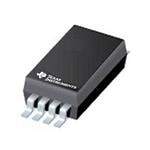
 Datasheet下载
Datasheet下载
